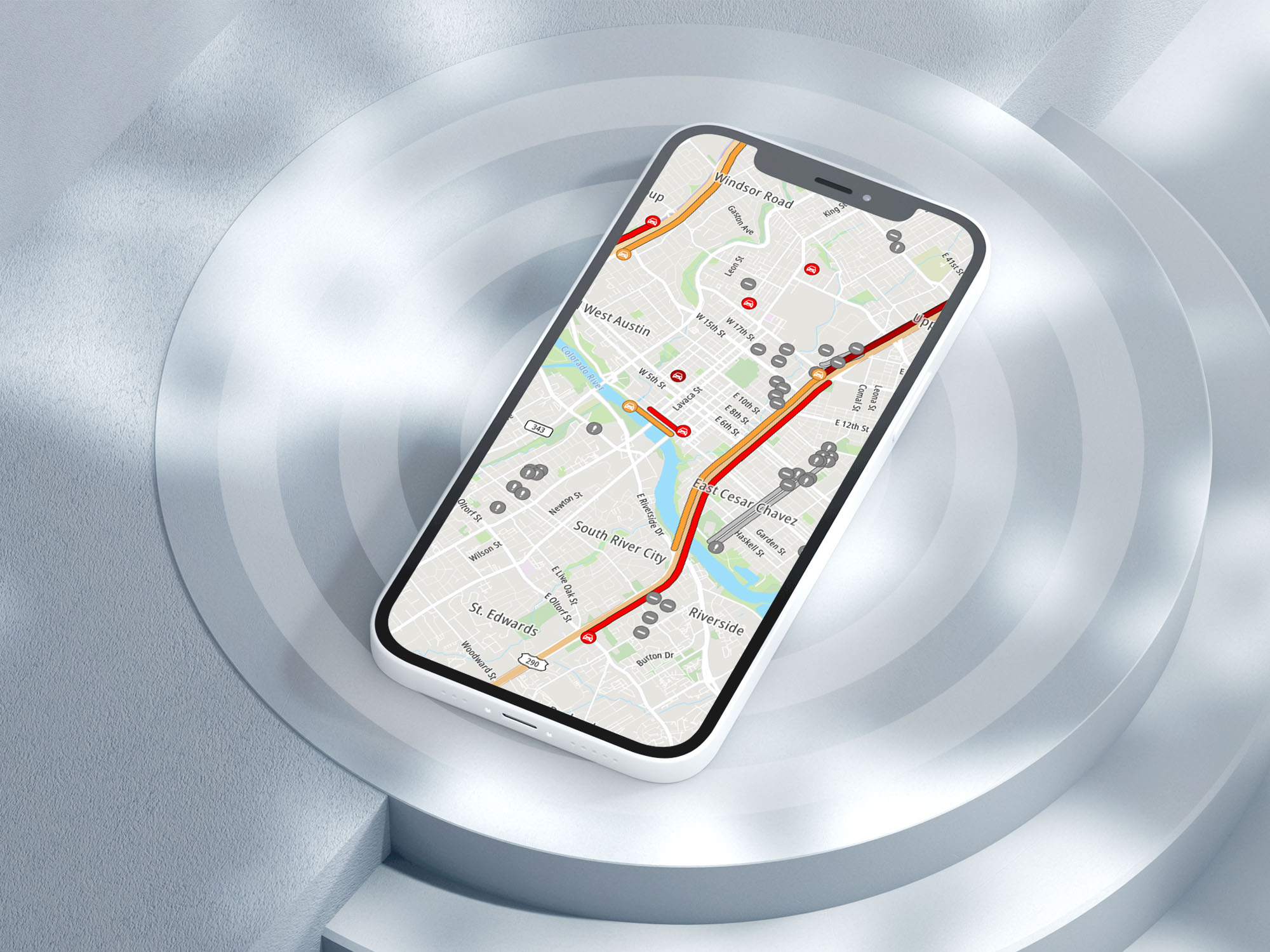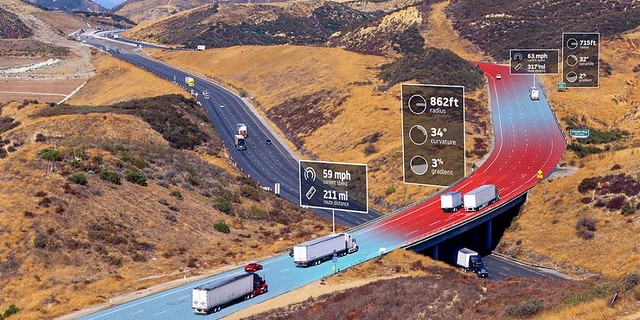Using Mapping APIs to Reward Insurance Customers for Good Driving Habits
)

Many insurance companies turn to mobile applications to monitor their clients’ safe — or not so safe — driving. Learn how to use TomTom Maps APIs to build out an app that insurance companies can trust to reward drivers for their good driving habits.
Are you a safe driver? If you’re like most people, you’ll answer “yes” to that question. But can you prove it?
And if you think you’re a safe driver, you might ask something like “Why should I pay a significant increase in automobile insurance just because I have a teenaged driver in the family?” But, again, can you prove that your teenager is a cautious driver?
Insurance companies want to be able to do just that, and TomTom makes it possible. Many companies offer their clients a mobile app that monitors their driving practices. Obtaining and saving this data allows insurance companies to make their rates more accurate, as they can determine fees and driver safety ratings using individual practices instead of demographics and actuarial tables.
TomTom’s Maps APIs enable you to develop applications that insurance companies such as Loop and Ingenie can use to monitor the driving practices of their clients. They provide insurance companies with the ability to more accurately determine their rates and refine their driver classification systems, simultaneously encouraging users who adopt safe driving habits.
This article provides you with an overview of some of TomTom’s Maps APIs and explains their ability to connect your application to the world of driver safety. And, as a case study, this article will zoom in on how you can use TomTom’s Maps APIs to develop an application that insurance companies could adopt to reward drivers for their good driving habits.
Insurance Companies Take the Lead
Insurance companies have taken the lead in developing technologies to track driving habits. They’ve been using it to offer rewards to drivers that download monitoring applications to their mobile devices or devices in their cars. These applications provide information about the user’s driving practices to their insurance providers. With this information, insurance companies can identify safer drivers and differentiate them from others in the same risk category.

The difficulty in developing this technology lies in collecting and maintaining the data you need to judge safety. For example, you need to know the speed limit on a road to know a driver is exceeding it. Or, you need to know the location of stop signs to know that the driver came to a complete stop.
Mobile devices have helped us overcome the difficulty of obtaining this information. This is because they contain two things: a Global Positioning System (GPS), and a system that can sense driving characteristics like speed, acceleration, and direction of movement. You can combine this information with GPS coordinates.
By comparing that data to certain conditions, such as the speed limit and traffic conditions, you can determine whether or not a driver is driving safely. Or, you can decide if the driver was speeding or whether the driver came to a complete stop at a stop sign. Collecting and analyzing driver behavior and road information provides you with a way to rate driver safety.
TomTom provides access to a rich array of Maps APIs to pair with your applications to collect this data. Using Map Styler, you can design custom maps that fit your application’s needs. For example, you can design a map with a style true to your brand’s identity, customize hundreds of details and display the map in your web or mobile app. And, you can display a fresh and reliable map with the required level of detail on a global scale. These APIs make it easy to incorporate these capabilities into your applications. You only need to add a few lines of code. Mobile device sensors provide the information. TomTom delivers the data to judge the behavior.
Let’s review some of the ways developers can create an application to monitor driver safety, and highlight things you’ll want to consider when preparing the application for use by an insurance company.
Understanding Road Conditions
Road conditions vary with location and time. These conditions include speed limits, traffic, and road curvature. Road curvature is an important one to consider because it limits visibility. Also, visibility and road conditions generally change because of external factors like weather, accidents, construction, and traffic volume.
Different conditions need different driving behaviors. Safe drivers are the ones that adapt to the conditions. Drivers who don’t adjust aren’t driving safely, and in doing so, increase their chance of having a traffic collision. TomTom’s services provide a way of collecting the data needed to differentiate between safe and hazardous drivers.
There are several relevant services a developer can use for this purpose. One is the Snap to Roads service, which provides detailed information on a reconstructed road efficiently. Developers can use this API to reconstruct the driven road, get detailed insights, and deliver innovative information to build applications with advanced map data.
Another relevant service is TomTom's Location History service, which keeps track and manages the locations of multiple objects. This API can share data with TomTom's Geofencing service to enhance it with the history of object transitions through fence borders.
Yet another relevant service is TomTom’s Reverse Geocoding API. This service provides information including a vehicle’s location, the speed limit of the road, and other external conditions, such as construction or a nearby collision that’s impacting traffic. TomTom also has data sets that include a road’s essential characteristics such as historical traffic conditions, real-time accident information, and speed limits. This data is available for most jurisdictions worldwide.
Acceleration and Abrupt Stops
TomTom’s data is available for use in your applications in many ways, including monitoring sudden acceleration and abrupt stopping. Paying attention to a driver’s habits and how often they suddenly start or stop helps insurance companies determine how reckless or aggressive a driver is being. Or, the reverse could be true, where insurance companies can determine that these sudden starts and stops are from the driver quickly responding to their surroundings.
One example of monitoring these habits is periodically checking for unusually rapid acceleration. Unusually rapid acceleration is something you might associate with unsafe driving. But a driver may need to speed up to merge onto a road with a higher speed limit. When your app detects strong acceleration, it can use TomTom’s Reverse Geocoding API to look up the speed limit of the road the driver exited. Then, that limit can be compared to the one the driver entered to see if the acceleration was reasonable.
Similarly, TomTom’s traffic and travel information API also enables you to assist in determining the necessity and safety of abrupt stops. If the app detects abrupt stops, it can call the TomTom Traffic API to determine if the app user is in heavy traffic. If so, it increases the likelihood the driver wasn’t careless but had to stop abruptly due to the actions of another driver, a traffic accident, or any road hazard.
Motion and Speed Detection
Paying attention to the speed limit using the Reverse Geocoding API allows you to record a driver’s driving pattern so that you can create a graph to be plotted later. From this, insurance companies can more accurately categorize drivers and use that data to give the driver feedback on why they’ve been rated as a good or bad driver.
Keep in mind that driving too slowly creates risk and well as driving too fast. TomTom’s Reverse Geocoding API provides you with the speed limit at any location point. By creating a history of a vehicle’s speed and comparing it to the speed limit on the roads it traveled, you can analyze a driver’s behavior over time. Then you can generate analytics that categorizes drivers into ranks. You can rank drivers according to the difference between the driver’s speed and the speed limit.
For example, you could assign divers plus or minus 5 percent of the speed limit a green rating, plus or minus 10 percent, a yellow rating, plus or minus 15 percent, a red rating. Ratings like this provide feedback to drivers that help them improve their habits. It also includes support for justifying lower premiums for safe drivers.
How Rich Data Benefits Insurance Companies
By identifying subgroups within a category, insurance companies can create a fairer system.
For example, you can use TomTom’s Location History API to determine how much time a driver is spending in accident-prone cities and areas. A large part of a driver’s insurance premium is determined by their home address. Someone might live in a high-risk area but do most of their driving in low-risk areas, or vice-versa.
Insurance companies can also use the Snap to Roads API to reconstruct driver’s journeys based on location points. This provides information about the roads drivers travel, such as the number of lanes and speed limits. With this data, insurance companies can assess the risk levels of drivers’ typical travels — and determine whether they are following the rules of the road.
Using TomTom’s APIs can help insurance companies better match a driver’s insurance premium an accurate risk level. And, insurance companies could use location and the average number of accidents in an area to determine premiums for all drivers living in that area. Having more accurate rates is a benefit to the insurance company.
Let’s go back to the example of the teenage driver. Insurance companies consider teenage drivers to be high-risk, regardless of their driving record. An insurance company might find it advantageous to attract safe drivers in this age group. And, perhaps, attract their parents as well. Proof of safe driving can offer a significant marketing advantage for these companies.
Using TomTom’s ability to provide this information enables your application to confirm safe driving behavior. The validation allows for insurance companies to offer fair premiums, giving them a competitive advantage.
Summary
Insurance companies can use this vast range of driving data to offer discounts to good drivers. In fact, applications that monitor a driver’s habits have primarily been used to reward safe driving.
However, the same technology can also be used to help unsafe drivers. For example, monitoring applications might convince insurance companies to insure drivers who might otherwise be considered uninsurable due to their poor records. Or, you could even create an app that helps these drivers prove they’ve learned from their mistakes.
Another idea is to create a service for parents of driving-age children that provides reports on driving safety. There’s a decent probability that parents are paying for the insurance — and own the car. They have a personal stake in knowing whether or not the driver is using their vehicle safely.
You can likely think of many more uses for the application of the information you can collect using TomTom’s Maps APIs. For more details on using all the TomTom APIs, visit the developer portal and register. You can also view a demo on how fleet management uses vehicle tracking to give you more ideas. For more information on reconstructing routes, check out this video tutorial on route reconstruction with the Location History API. And, visit TomTom to learn about the full array of services they enable.